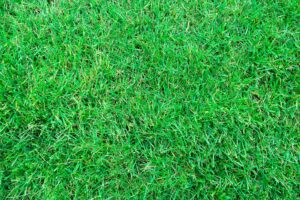An oft-forgotten element of the lawn care process, aeration can form a vital part of any proud lawn owner’s upkeep of their turf. While mowing, fertilising and watering have very obvious benefits attached to them, aeration is more of a subtle beast. But it is often no less important.
So What Is Aeration?
Aeration is the process of violently stabbing your lawn. But don’t worry, your lawn loves it! Perforating your turf with small holes allows for water, air and nutrients to get in and under the grass roots, helping them grow deeper. This will create a stronger, more vigorous and more drought resistant lawn.
Aeration is usually used as a method of stopping soils getting overly compacted. A severely compacted soil won’t allow the circulation of the required water, air and nutrients to keep your grass nice and healthy. Aeration also works for built-up organic debris and excess lawn thatch. These will also prevent the circulation of elements vital to good growth if they aren’t dealt with.
You May Not Need to Aerate
There are a few qualifiers to consider to see whether your turf requires aeration. It may well be that it’s doing just fine without it. But if your backyard ticks any of the following boxes, it may be advisable.
If your lawn, even just a small section, is subject to a fair bit of foot traffic, this will lead to inevitable soil compacting. Areas with high use will need extra care because you’ve got the double hit of soil compaction below, and wear-and-tear on the grass above.
If your lawn feels spongy or dries out easily. These are indicators or a potential thatch problem. The only real way to check on your thatch situation is by looking at a profile of the soil, so take a shovel and cut a small square out of your lawn 10cm deep. If the layer of thatch is more than 1.5cm, it’s time to aerate.
If you have a layered soil, there may be a chance that a finer topsoil is stopping water getting to the lower, root-heavy parts. Aerating will break up this layering.
When To Aerate
Your grass’s peak growing season is going to be the best time to aerate your lawn. This will allow the blades to heal quicker, and for the soil plugs formed by the aerator to be covered over more quickly. For cool season grasses this will be in late autumn/early spring, while warm season grasses will deal best with aeration around late spring/early summer.
Choose Your Tool
There are 2 types of aerators – spike and plug. They do what their names suggest.
Spike aerators poke a hole in the ground with a spike, while plug aerators will remove a cylinder of dirt with every puncture. The latter is far better.
Spike aerators may even be doing more harm than good. By pushing aside the dirt to create a hole, they compact the dirt either side of the hole even further. With plug aerators this problem will vanish, as the dirt is completely removed.
A plug aerator that removes dirt 5-8cm deep and 1cm in diameter, in spacings of 5-8cm, will be perfect for most situations. They are hireable from most gardening centres.
The How To
So you’ve decided that your lawn is in need of a bit of aeration. Terrific! Here’s how to go about it:
- To help the aerator do its work, make sure the soil is moist and easily punctured. The day after watering or rain is perfect
- Aim for only the affected areas. Doing your whole yard when only a small percentage requires aeration is just a waste of time
- You can recycle the soil plugs by breaking them up and adding them fertiliser-style as a topsoil to your lawn
- After aerating, keep up your basic lawn care practices to avoid seeing your good work go to waste!
In some cases, aeration is vital to get the most out of your beloved lawn. By checking whether it is required, and combining it into your garden routine if it is, you’ll be on your way to an even more healthy and pristine patch of yard.



